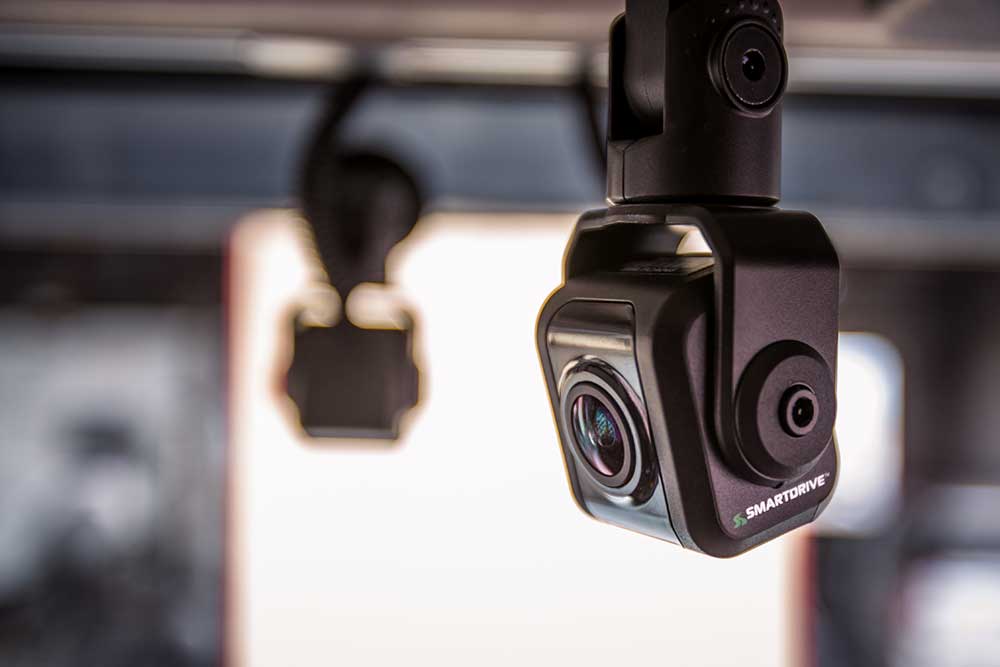“Artificial intelligence” (AI) may evoke fears of robots writing their own software code and not taking orders from humans.
copyright by www.ccjdigital.com
 The real AI, at least in present form, is already delivering results in the business world. Technology companies are using powerful computers and advanced statistical models to accelerate product development. Most do not call these efforts AI but machine learning, however. As a form of AI, machine learning is making it possible to quickly find relevant patterns in data captured by Internet of Things (IoT) devices and sensors, explains Adam Kahn, vice president of fleets for Netradyne, which has a vision-based fleet safety system, Driveri (“driver eye”).
The real AI, at least in present form, is already delivering results in the business world. Technology companies are using powerful computers and advanced statistical models to accelerate product development. Most do not call these efforts AI but machine learning, however. As a form of AI, machine learning is making it possible to quickly find relevant patterns in data captured by Internet of Things (IoT) devices and sensors, explains Adam Kahn, vice president of fleets for Netradyne, which has a vision-based fleet safety system, Driveri (“driver eye”).
Ten years ago, fleet safety managers had to interpret critical events reported from telematics systems, Kahn says. A “hard brake” event may not be a symptom of distracted or aggressive driving behaviors. The driver might have hit the brakes when a car suddenly him cut off in traffic. Video-based safety systems have given fleets context for hard braking and other safety-critical events. With machine learning, these systems are now automating the review process of video and data by identifying complex patterns of risk.
New technologies are giving drivers visual and audible tones and feedback to deter risky behaviors like fatigue and distraction. In many cases, this direct-to-driver coaching model can eliminate the need for managers to schedule face-to-face meetings with drivers. Other applications using AI are instantly solving difficult transportation problems beyond the realm of safety.
Moving to the edge
The foundation of machine learning and artificial intelligence is precision of data and accuracy of statistical learning models, Kahn says. Data precision comes from vehicle and engine electronics, cameras, sensors and IoT devices in vehicles. With precision, technology suppliers are able to apply machine learning models to accurately identify relevant patterns. The patterns are detected by algorithms uploaded to servers in the cloud and to “edge” computing devices with the processing power to support advanced mobile applications. Some edge devices use teraflop processors similar to those in the Xbox gaming system. The processing power enables computer vision to detect complex patterns of risk from high-definition video, Kahn says. Patterns for driver fatigue, like yawning, and distraction can be instantly detected as can other behaviors like following distances that are unsafe given current speeds, road and traffic conditions. […]
read more – copyright by www.ccjdigital.com


“Artificial intelligence” (AI) may evoke fears of robots writing their own software code and not taking orders from humans.
copyright by www.ccjdigital.com
Ten years ago, fleet safety managers had to interpret critical events reported from telematics systems, Kahn says. A “hard brake” event may not be a symptom of distracted or aggressive driving behaviors. The driver might have hit the brakes when a car suddenly him cut off in traffic. Video-based safety systems have given fleets context for hard braking and other safety-critical events. With machine learning, these systems are now automating the review process of video and data by identifying complex patterns of risk.
New technologies are giving drivers visual and audible tones and feedback to deter risky behaviors like fatigue and distraction. In many cases, this direct-to-driver coaching model can eliminate the need for managers to schedule face-to-face meetings with drivers. Other applications using AI are instantly solving difficult transportation problems beyond the realm of safety.
Moving to the edge
The foundation of machine learning and artificial intelligence is precision of data and accuracy of statistical learning models, Kahn says. Data precision comes from vehicle and engine electronics, cameras, sensors and IoT devices in vehicles. With precision, technology suppliers are able to apply machine learning models to accurately identify relevant patterns. The patterns are detected by algorithms uploaded to servers in the cloud and to “edge” computing devices with the processing power to support advanced mobile applications. Some edge devices use teraflop processors similar to those in the Xbox gaming system. The processing power enables computer vision to detect complex patterns of risk from high-definition video, Kahn says. Patterns for driver fatigue, like yawning, and distraction can be instantly detected as can other behaviors like following distances that are unsafe given current speeds, road and traffic conditions. […]
read more – copyright by www.ccjdigital.com
Share this: